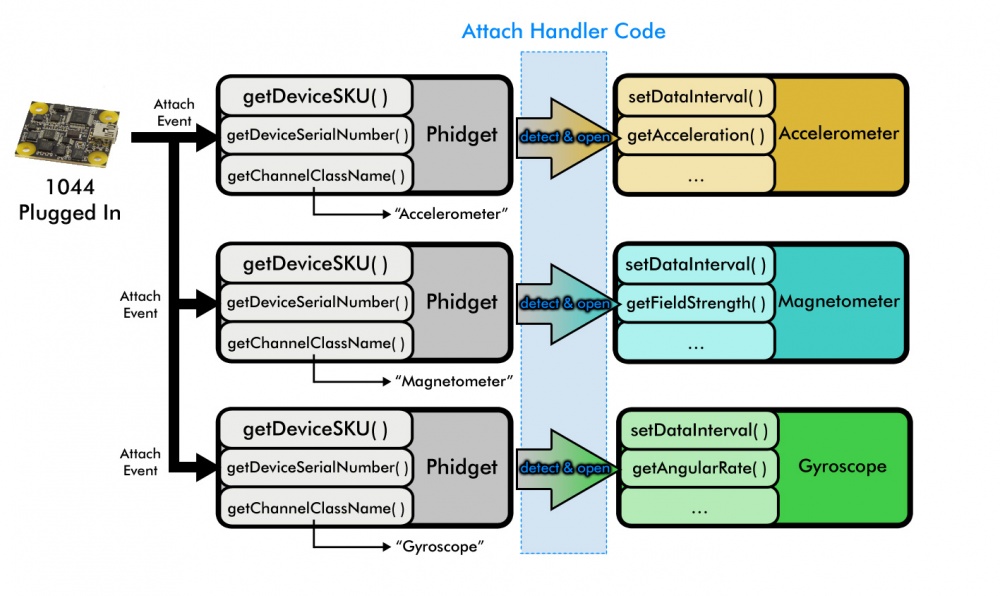Phidget Manager: Difference between revisions
No edit summary |
|||
| Line 59: | Line 59: | ||
A further example would be "HelloWorld" for most [[Software Overview#Language Support|supported languages]] uses the Phidget Manager. | A further example would be "HelloWorld" for most [[Software Overview#Language Support|supported languages]] uses the Phidget Manager. | ||
==Opening a Manager Channel=== | |||
Revision as of 17:04, 13 July 2017
General Overview
The Phidget Manager is an interface into the device channels available to the Phidget library. The API is strictly asynchronous, a continuously monitors channels as they attach and detach. Each Phidget exports one or more device channels, and when a Phidget is plugged into a system (or become available over the network), an attach event is fired for each channel available on that Phidget.
It is important to understand the concepts of attach and detach as the they relate to the manager. A manager attach does not imply that a user channel has attached to a device channel, but that the device channel have become available. The device channel is now ready to be attached to a user channel. When a user channel closes and detaches from a device channel a manager event will not be fired. A manager detach event is fired when the Phidget device is removed from the system.
Purpose
The primary function of a Phidget Manager is to fire an attach event for each new device channel when a Phidget becomes available to a system, and to fire a detach event for each device channel that is no longer available when the Phidget is removed from the system. For example, when a 1044_0 - PhidgetSpatial is connected, a Phidget Manager would fire three attach events, one for each device channel, as illustrated below:

Using the Phidget Manager
Much like a Phidget channel, a Phidget Manager must be created and opened. Refer to the Phidget22 API for details.
As soon as a manager is opened the Phidget library will fire an event for each device channel that is currently know to the system. After those initial events, attach and detach events will be fired when new Phidgets become available or existing Phidget are removed.
In the C programming language, it is not safe to refer to a PhidgetHandle after an event handler returns, unless Phidget_retain() is first called (Phidget_open() and Phidget_close() retain and release handlers automatically). The PhidgetHandle must be released with Phidget_release() if it has been retained. The object oriented languages supported in the Phidget22 API automatically retain and release handles.
What follows is an example of how to use a manager in C:
static void CCONV
mgrAttachHandler(PhidgetManagerHandle mgr, void *ctx, PhidgetHandle devch) {
PhidgetLog_log("%P attached", devch);
}
static void CCONV
mgrDetachHandler(PhidgetManagerHandle mgr, void *ctx, PhidgetHandle devch) {
PhidgetLog_log("%P detached", devch);
}
int
main(int argc, char **argv) {
PhidgetManagerHandle mgr;
PhidgetManager_create(&mgr);
PhidgetManager_setOnAttachHandler(mgr, mgrAttachHandler, NULL);
PhidgetManager_setOnDetachHandler(mgr, mgrDetachHandler, NULL);
PhidgetManager_open(mgr);
/* Do something long running, like run a GUI threads */
/* Now close and delete the manager */
PhidgetManager_close(mgr);
PhidgetManager_delete(&mgr);
exit(0);
}
A further example would be "HelloWorld" for most supported languages uses the Phidget Manager.
